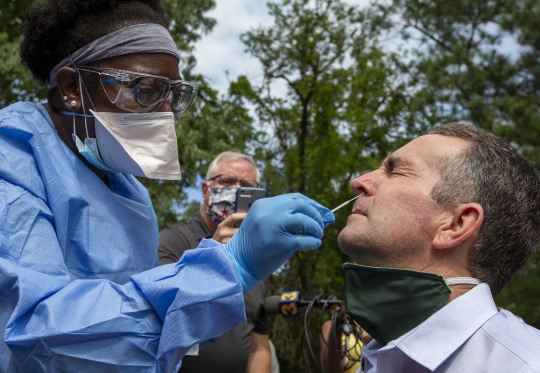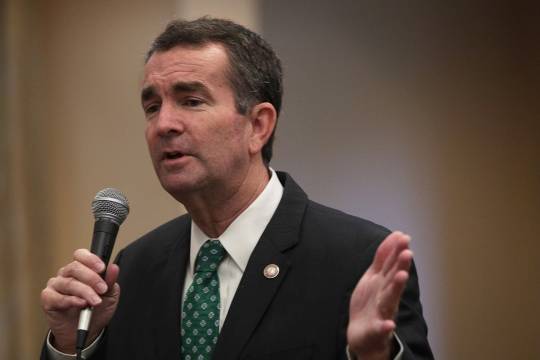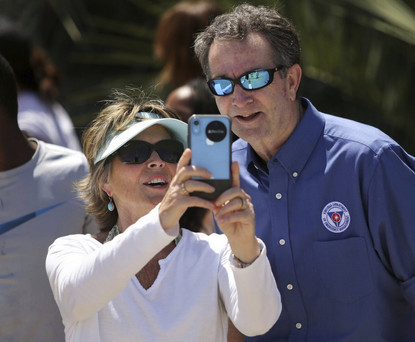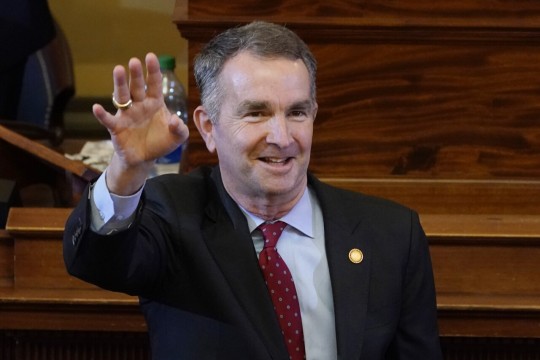#Ralph Northam
Text
Virginia Governor DILFs



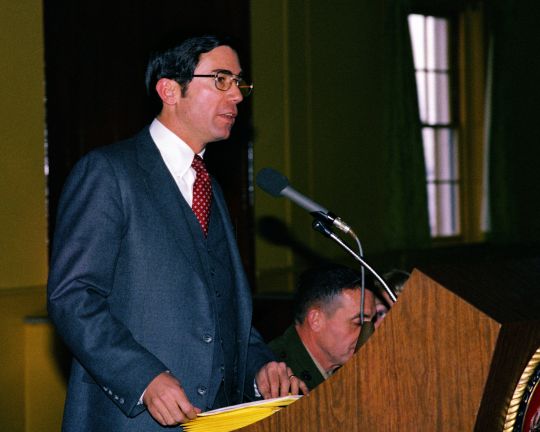
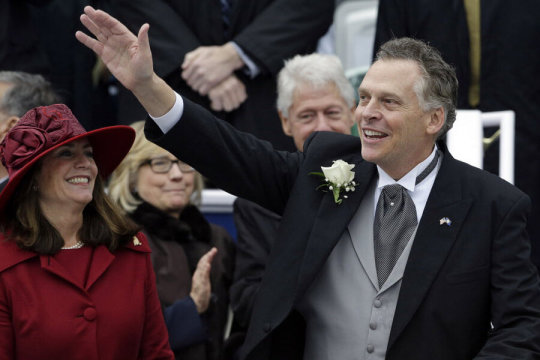


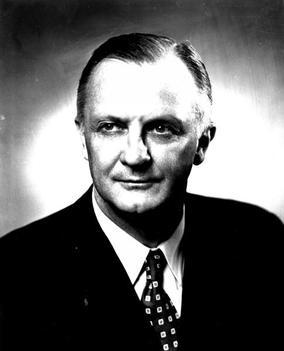


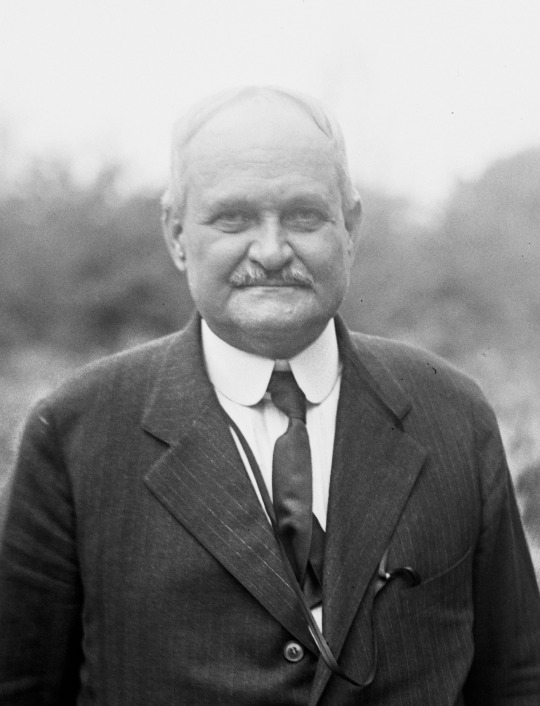


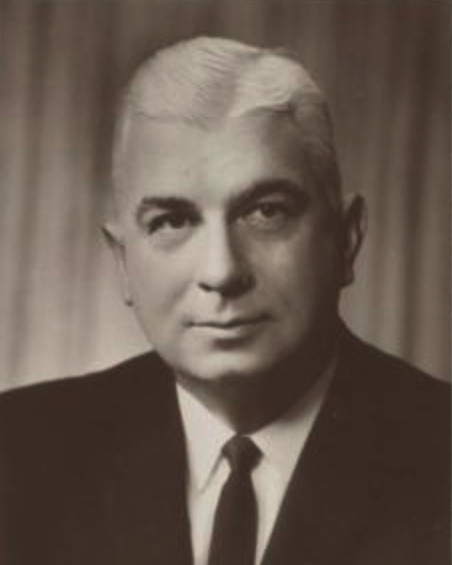


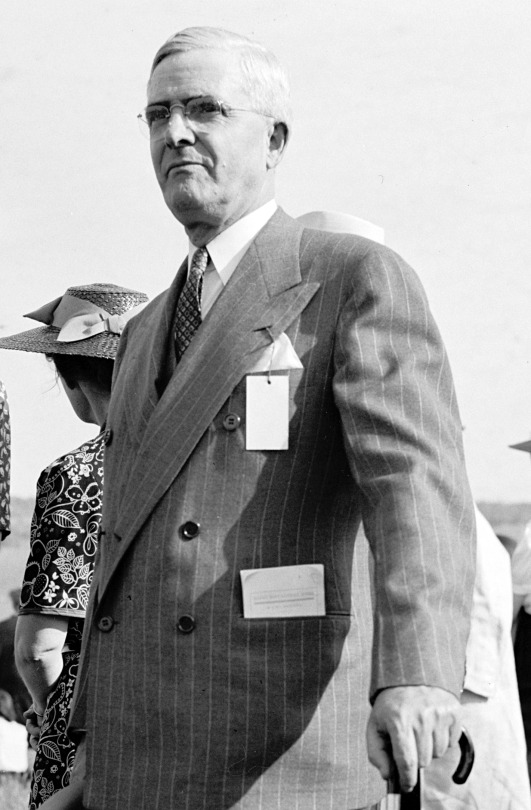
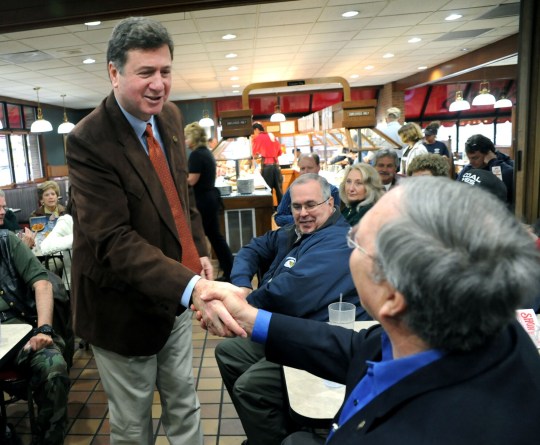
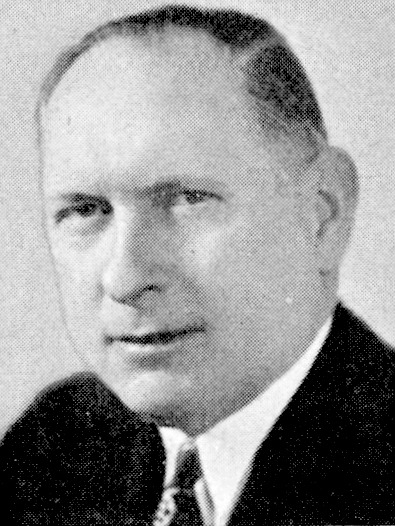
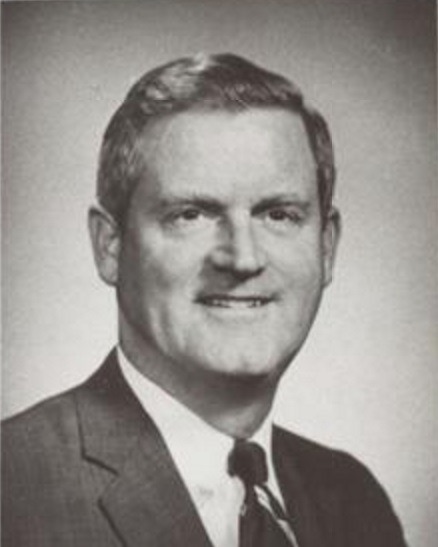


Mark Warner, Tim Kaine, Ralph Northam, Chuck Robb, Terry McAuliffe, Douglas Wilder, Bob McDonnell, Colgate Darden, Gerald Baliles, Jim Gilmore, Westmoreland Davis, John N. Dalton, J. Lindsay Almond, Albertis Harrison, John S. Battle, William M. Tuck, James Hubert Price, George Allen, Thomas B. Stanley, Linwood Holton, Mills Godwin, Glenn Youngkin
#Mark Warner#Tim Kaine#Ralph Northam#Chuck Robb#Terry McAuliffe#Douglas Wilder#Bob McDonnell#Colgate Darden#Gerald Baliles#Jim Gilmore#Westmoreland Davis#John N. Dalton#J. Lindsay Almond#Albertis Harrison#John S. Battle#William M. Tuck#James Hubert Price#George Allen#Thomas B. Stanley#Linwood Holton#Mills Godwin#Glenn Youngkin#GovernorDILFs
16 notes
·
View notes
Text


The Valiant Era Cards 20
#The Valiant Era Cards#magnus robot fighter#Magnus#northam#robs#the future#valiant comics#ralph reese#trading cards#comics trading cards#90s comics trading cards#90s comics#upper deck
4 notes
·
View notes
Text
New footage of Nancy Pelosi and Chuck Schumer huddling with members of the House and Senate amid the January 6 attack was played by the House Select Committee investigating the attack on Thursday.
In the footage, Ms. Pelosi is heard on the phone with Virginia’s Governor Ralph Northam and securing the aid of hundreds of police and National Guard troops as backup.
“Governor, I don’t know if you’ve been approached about the Virginia National Guard,” the House Speaker was seen telling Mr. Northam on her cell phone.
As Ms. Pelosi was making calls for backup, rioters in the Capitol were yelling “bring her out” in reference to the House Speaker, according to a video montage produced by CNN.
Later, in a joint call with Ms. Pelosi beside him, Mr. Schumer is heard demanding that the acting Attorney General get in contact with the White House and insist that Mr. Trump call off his supporters.
“Yeah, why don't you get the president to tell them to leave the Capitol, Mr. Attorney General, in your law enforcement responsibility,” Mr. Schumer is heard saying.
“I’m gonna call up the effing Secretary [of Defense],” he is heard saying at another point around 3.00 p.m.
The two are heard in repeated instances angrily blaming Mr. Trump for the attack and demanding that he do something to get his supporters to leave the building.
They are also seen discussing the issue of continuing with the work of certifiying the 2020 election once the attack ends — even as it remains ongoing.

Aside from the footage of Democratic leadership filling what panel members referred to as a “void” of authority emanating from the White House, the video also depicted a more unguarded look at America’s elected leaders than most see on a given day. In one part, several Democrats including Ms. Pelosi, Senator Dick Durbin, Congresswoman Ilhan Omar and others are seen sprawled out in chairs around a table with a box of Triscuits in the middle.
The footage pretty directly contradicts conspiracies that Donald Trump has sought to spread about their actions that day; he has long insisted that Democrats did nothing to secure the Capitol both ahead of time (which was not their responsibility as legislators instead of Executive Branch members) and did nothing to rally law enforcement during the attack itself.
#us politics#news#donald trump#the independent#2022#rep. nancy pelosi#trump administration#capitol riot investigation#capitol riot#house select committee#sen. chuck schumer#sen. dick durbin#gov. Ralph Northam#Virginia National Guard#tweet#twitter#the recount#rep. ilhan omar
36 notes
·
View notes
Text
watching random kiera knightley movie on netflix and a wild northam appears:
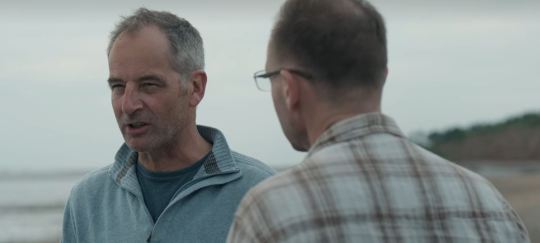
#also: ralph fiennes#losing my mind that these two 90s leading men are just having this dad sweater on the beach conversation#jeremy northam#ralph fiennes#britain only has 12 actors...#official secrets
39 notes
·
View notes
Text

Holy shit, that's nuts. Imagine having something like this show up and still having the audacity to keep running and expect people to vote for you.
Anyone that would vote for her now should be branded a racist of the highest order.
Don't you agree Prime Minster Tredeau

How about you former Virginia governor Ralph Northam, I imagine you're disgusted at the racism of the political right and have been fighting that evil your whole life.

For the record, she should drop out and if she doesn't she should get zero votes, but you don't get to pretend to be offended by this now if you sat and said nothing before.
134 notes
·
View notes
Text
Youngkin doesn’t even seem to believe in his own strategy, because he’s reverting to a classic Republican gambit — preventing people from voting. In March, Youngkin overturned his Democratic predecessor Ralph Northam’s policy that had automatically restored voting rights to people convicted of felonies. Northam had returned the franchise to 69,000 people who’d served their time but Youngkin kept them second-class citizens.
That was bad enough but then his cronies “accidentally” removed hundreds of people from the state’s voter rolls who actually aren’t felons. Whoops!
According to Shawn Weneta, policy strategist at American Civil Liberties Union of Virginia, Youngkin’s team has mostly shrugged its shoulders over concerns raised in June about wrongful disenfranchisement of voters.
Weneta told Axios, “If they don’t have this fixed tomorrow, there are going to be people that are showing up to vote who are not going to be registered and are going to vote with a provisional ballot that might not get counted.”
#us politics#Virginia#voter disenfranchisement#please confirm your enrollment if you plan to vote#they are trying to disenfranchise voters in advance of an abortion ban vote#in support of an informed and engaged electorate
15 notes
·
View notes
Text
Schools do a poor job of teaching about America’s legacy of white supremacy, according to a scholar who researches racial discrimination.
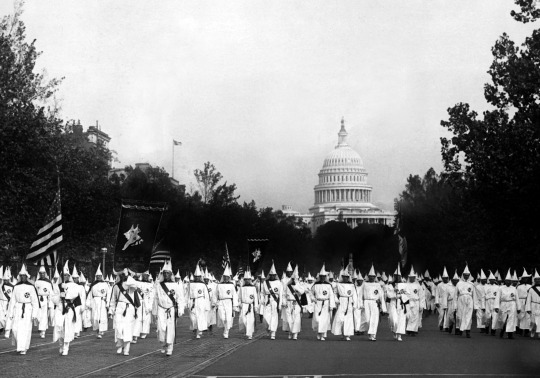
A Ku Klux Klan parade in Washington, D.C., in 1926
When it comes to how deeply embedded racism is in American society, blacks and whites have sharply different views.
For instance, 70 percent of whites believe that individual discrimination is a bigger problem than discrimination built into the nation’s laws and institutions. Only 48 percent of blacks believe that is true.
Many blacks and whites also fail to see eye to eye regarding the use of blackface, which dominated the news cycle during the early part of 2019 due to a series of scandals that involve the highest elected leaders in Virginia, where I teach.
The donning of blackface happens throughout the country, particularly on college campuses. Recent polls indicate that 42 percent of white American adults either think blackface is acceptable or are uncertain as to whether it is.
One of the most recent blackface scandals has involved Virginia Gov. Ralph Northam, whose yearbook page from medical school features someone in blackface standing alongside another person dressed in a Ku Klux Klan robe. Northam has denied being either person. The more Northam has tried to defend his past actions, the clearer it has become to me how little he appears to know about fundamental aspects of American history, such as slavery. For instance, Northam referred to Virginia’s earliest slaves as “indentured servants”. His ignorance has led to greater scrutiny of how he managed to ascend to the highest leadership position in a racially diverse state with such a profound history of racism and white supremacy.
Ignorance is Pervasive
The reality is Gov. Northam is not alone. Most Americans are largely uninformed of our nation’s history of white supremacy and racial terror.
As a scholar who researches racial discrimination, I believe much of this ignorance is due to negligence in our education system. For example, a recent study found that only 8 percent of high school seniors knew that slavery was the central cause of the Civil War. There are ample opportunities to include much more about white supremacy, racial discrimination and racial violence into school curricula. Here are three things that I believe should be incorporated into all social studies curricula today:
1. The Civil War was fought over slavery and one of its offshoots – the convict-lease system – did not end until the 1940s.
The Civil War was fought over the South’s desire to maintain the institution of slavery in order to continue to profit from it. It is not possible to separate the Confederacy from a pro-slavery agenda and curriculums across the nation must be clear about this fact.
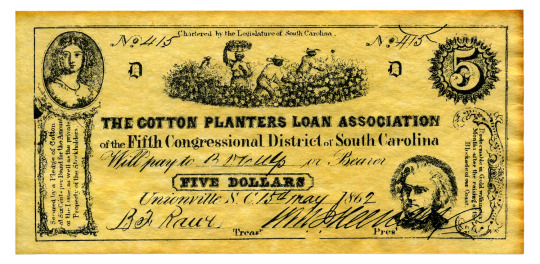
A Confederate treasury note from the Civil War Era shows how reliant the South’s economy was on slave labor. Photo from Scott Rothstein / www.shutterstock.com.
After the end of the Civil War, southern whites sought to keep slavery through other means. Following a brief post-Civil War period known as Reconstruction, white southerners created new laws that gave them legal authority to arrest blacks over the most minor offenses, such as not being able to prove they had a job.
While imprisoned under these laws, blacks were then leased to corporations and farms where they were forced to work without pay under extremely harsh conditions. This “convict leasing” was, as many have argued, slavery by another name and it persisted until the 1940s.
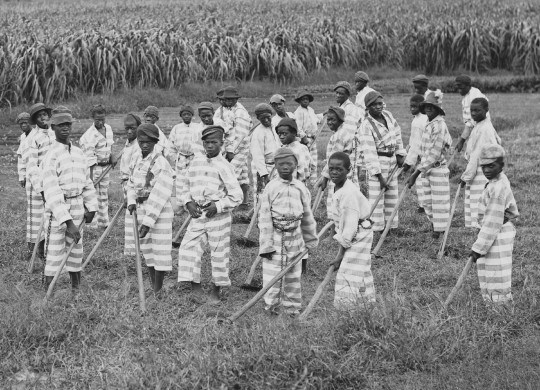
Southern jails made money leasing convicts for forced labor in the Jim Crow South. Circa 1903. Photo from Everett Historical / www.shutterstock.com.
2. The Jim Crow era was violent.
While students may be taught about segregation and laws preventing blacks from voting, they often are not taught about the extreme violence whites enacted upon blacks throughout the Jim Crow era, which took place from 1877 through the 1950s. Mob violence and lynchings were frequent occurrences – and not just in the South – throughout the Jim Crow era.
Racial terror was used as a means for whites to maintain power and prevent blacks from gaining equality. Notably, many whites – not just white supremacist groups like the Klu Klux Klan – engaged in this violence. Moreover, the torture and murder of blacks was not associated with any consequences.
During this same time, white society created negative stereotypes about blacks as a way to dehumanize blacks and justify the violence whites enacted upon them. These negative stereotypes included that blacks were ignorant, lazy, cowardly, criminal and hypersexual.
Blackface minstrelsy refers to whites darkening their skin and dressing in tattered clothing to perform the negative stereotypes as part of entertainment. This imagery and entertainment served to solidify negative stereotypes about blacks in society. Many of these negative stereotypes persist today.
3. Racial inequality was preserved through housing discrimination and segregation.
During the early 1900s, a number of policies were put into place in our country’s most important institutions to further segregate and oppress blacks. For example, in the 1930s, the federal government, banks and the real estate industry worked together to prevent blacks from becoming homeowners and to create racially segregated neighborhoods.
This process, known as redlining, served to concentrate whites in middle-class suburbs and blacks in impoverished urban centers. Racial segregation in housing has consequences for everything from education to employment. Moreover, because public school funding relies so heavily on local taxes, housing segregation affects the quality of schools students attend.
All of this means that even after the removal of discriminatory housing policies and school segregation laws in the 1950s and 1960s, the consequences of this intentional segregation in housing persist in the form of highly segregated and unequal schools. All students should learn this history to ensure that they do not wrongly conclude that current racial disparities are based on individual shortcomings – or worse, black inferiority – as opposed to systematic oppression.
Americans live in a starkly unequal society where health and economic outcomes are largely influenced by race. We cannot begin to meaningfully address this inequality as a society if we do not properly understand its origins. The white supremacists responsible for sanitizing our history lessons understood this. Their intent was clearly to keep the country ignorant of its racist past in order to stymie racial equality. To change the tide, we must incorporate a more accurate depiction of our country’s racist history in our K-12 curricula.
#3 Things Schools Should Teach About America’s History of White Supremacy#white supremacy#american hate#american white supremacy#education#white lies#white history of hate#homegrown supremacy#systemic racism#convict leasing#13th amendment#vagrancy laws#racism in american systems#systemic oppression#Jim Crow#Jim Crow Laws#Black Codes
14 notes
·
View notes
Text
North Carolina on Monday became the 40th state to expand Medicaid under the Affordable Care Act, the latest sign of how Republican opposition to the health measure has weakened more than a decade after President Barack Obama signed it into law.
Gov. Roy Cooper, a Democrat, signed legislation expanding the state’s Medicaid program during a sunny afternoon ceremony on the lawn of the Executive Mansion, days after the Republican-controlled legislature gave final approval to the measure. He was surrounded by patients, advocates and some of the same Republican leaders who had previously blocked expansion in the state.
The bill will expand Medicaid to adults who make less than 138% of the federal poverty level, or about $41,000 for a family of four. State officials say the expansion will cover an estimated 600,000 people. It will take effect when the state adopts a budget, likely by June, Mr. Cooper said in an interview before the signing ceremony.
“Today is a historic step toward a healthier North Carolina,” the governor declared before signing the measure. When a reporter pressed him on when the expansion would take effect, he said, “It’s only a question of when, not if.”
It has been nearly 11 years since the Supreme Court ruled that states did not have to expand Medicaid — the government health insurance program for low-income people — under the Affordable Care Act. Nearly half the states opted out. More recently, progressives have helped to expand Medicaid in seven states — all of them with either Republican-controlled or divided governments — by putting the question directly to voters; in November, South Dakota adopted Medicaid expansion via the ballot box.
But getting Republican elected officials to abandon their opposition to expanding the program has not been easy. The last state where a Republican-controlled legislature voted to expand Medicaid was Virginia, in 2018. The governor at the time was a Democrat, Ralph Northam.
The battle over Medicaid has been particularly intense in North Carolina. Supporters of expansion conducted hundreds of “Moral Mondays” protests at the State Capitol. In 2014, the Republican mayor of a town that lost its hospital walked all the way to Washington to build support for expansion.
Monday’s bill signing leaves just 10 states — all with divided or Republican leadership, and most of them in the South — that have yet to expand Medicaid. Advocates say they now have their sights set on Alabama, where Gov. Kay Ivey, a Republican, can expand her state’s program with her own authority.
In North Carolina, there are various reasons for Republicans’ recent change of heart. Much of the opposition in the state and elsewhere has been both ideological and partisan — a reflection of Republicans’ deep distaste for Mr. Obama. But it is now clear that the Affordable Care Act, known as Obamacare, is here to stay. Republicans in Washington have been unable to repeal the law and appear to have largely given up fighting it, helping to pave the way for expansion in North Carolina.
“The argument that this is somehow an endorsement of Obamacare is losing a lot of political currency, even among conservatives,” said Frederick Isasi, the executive director of Families USA, a health care advocacy group based in Washington.
Hospitals, especially struggling rural ones, are eager for the extra revenue that Medicaid reimbursement will bring. The federal government picks up 90% of the costs of reimbursement under the expansion, and in North Carolina, hospitals will pay the other 10%. The state has revamped its Medicaid program, moving it from a fee-for-service program to one that relies on managed care — a long-sought goal of Republicans.
“This has been a long day coming, but it’s been as a result of a lot of reforms,” Tim Moore, the Speaker of the state’s House of Representatives and a Republican, said during the signing ceremony. The changes, he said, “allowed us to be in the position that we’re in today to be able to expand this coverage.”
For Mr. Cooper, who is in his second term and has been mentioned as a possible future Democratic candidate for Senate or even president, the bill signing was a significant victory. He sought to expand Medicaid when he first took office in 2017, and Republicans sued in federal court to stop him from doing it.
The push for expansion picked up steam last year, when the state’s House and Senate approved separate measures. But the two chambers were unable to reconcile differences.
The signing ceremony on Monday was at turns poignant and celebratory. Cassandra Brooks, who operates Little Believer’s Academy, a day care center in the Raleigh area, choked back tears as she recalled two of her teachers who had died, she said, because they could not afford health care.
“They were excellent early childhood teachers who didn’t have health insurance and passed away due to preventable health conditions,” she said. She cast the expansion measure as a boon to small businesses that operate on thin margins and cannot afford to offer their employees coverage.
“Here’s to Medicaid expansion in North Carolina,” she said. “Here’s to supporting small business in North Carolina. Here’s to continued growth in North Carolina. I believe in North Carolina.”
#us politics#news#the new york times#2023#expand medicaid#medicaid#obamacare#affordable care act#Gov. Roy Cooper#north carolina#Tim Moore
18 notes
·
View notes
Text
As horrible as this article is….remember the commie Dems support full term abortion. Up to and including immediately after birth. There is much “fact checking” and word games and denials about this…but they do.
3 notes
·
View notes
Text
Virginia state Sen. Jennifer McClellan will win the special election for Virginia’s 4th Congressional District and will become the first Black woman to represent the commonwealth in Congress, CNN projected Tuesday.
McClellan will defeat Republican Leon Benjamin, a pastor and Navy veteran, to succeed the late Democratic Rep. Donald McEachin, who died in November.
The heavily Democrat district, which comprises the city of Richmond, parts of Henrico County, Petersburg and south toward the state line, had been held by McEachin since 2017. He overwhelmingly defeated Benjamin in 2022 for the seat with 69.4% of the vote.
McClellan outraised and outspent Benjamin in the lead-up to Tuesday’s special election, according to their respective campaigns’ pre-special election reports filed on February 9.
Her election to the US House of Representatives is a milestone for Virginia, a state that was once home to the capital of the Confederacy and is a former slave-trading center. McClellan’s victory will add to what is already a record number of women and women of color in Congress, and also set a new record for the number of Black women, according to data from the Center for American Women and Politics at Rutgers University.
On a busy Saturday ahead of the election, she greeted voters alongside Virginia Sen. Tim Kaine, a close ally who officiated her wedding, and local and state lawmakers. She also rallied a few dozen campaign volunteers before they went knocking on doors of potential voters and cast her ballot along with her husband, David Mills, with their two children Jackson and Samantha.
“It’s a tremendous honor but it’s also a tremendous responsibility because I need to make sure I’m not the last,” McClellan said after casting her ballot. “And, I have a responsibility to be a mentor and help pave the way for other Black women, whether it’s, you know, running for federal office or running at local or state and to just help as many as I can to succeed.”
Raised in Petersburg, Virginia, McClellan was elected to the House of Delegates in 2005 and won a 2017 special election for state Senate after McEachin was elected to Congress in 2016.
In 2020, she launched a bid for governor, eventually coming in third in the 2021 Democratic primary. Her bid for the US House was a “level up” from her delegate and gubernatorial campaigns, which helped her prepare for this campaign, she told CNN.
“That I had that team ready to go when the special came and it made it very easy to build a very fast campaign. And that the importance of having not only a message that resonates with voters but the resources to communicate it. That both are equally important and having the importance of a field organization, you really need all three, and I was able to pull all three together in a very short amount of time,” she said.
McClellan won the Democratic nomination for the 4th Congressional District in December, defeating fellow state Sen. Joe Morrissey and two other candidates in a “firehouse primary,” which was conducted by party officials across a handful of pop-up voting locations. She took 85% of the vote to Morrissey’s 14%, according to the Virginia Democratic Party. McClellan was backed by party leaders and groups, including House Democratic Whip Katherine Clark and the moderate-backing Democratic Majority for Israel PAC.
During her time in the General Assembly, McClellan has pushed legislation on several issues, including climate, gun reform and education. In 2020, a bill rolling back restrictions on abortion rights that she sponsored in the state Senate was signed into law by then-Gov. Ralph Northam, a Democrat.
She spearheaded the Voting Rights Act of Virginia, which was signed into law in 2021 and aimed to eliminate voter suppression and intimidation in the commonwealth. McClellan also sponsored her chamber’s resolution that helped Virginia become the 38th state to ratify the Equal Rights Amendment, which bans discrimination on the basis of sex and guarantees equality for women under the Constitution. (In 2022, state Attorney General Jason Miyares, a Republican, withdrew Virginia from a legal effort to have the Equal Rights Amendment recognized as the 28th Amendment to the Constitution.)
McClellan told CNN she plans to continue her work on issues including voting rights, education and access to health care, but she may be met with challenges in the US House. Republicans’ majority in the chamber makes the possibility of passing Democratic-backed priorities slim. And Republicans in the Senate, although still in the minority, have already blocked advancement of previous voting rights measures.
“I was in the minority party for 14 years here,” McClellan said of her time in Richmond. “I learned two things. One, you really need to listen and understand why people believe what they believe, where they are coming from. And when you do that, sometimes you’ll find common ground,” she said. “So, start from that and then see how far you can go. If you can’t find common ground, then persist until you succeed, and I’ve had success doing both at the state level.”
McClellan said she is interested in joining the Armed Services, Agriculture and Foreign Affairs Committees, though said she’d be “happy with whatever I get.” She said she is also excited to join the Congressional Black Caucus.
9 notes
·
View notes
Text
to be real. the catastrophizing about the train in Ohio seems to be making it easy to overlook over the fact that the one reporter that was arrested by local police (and as far as i know is still being charged with disorderly conduct and criminal trespassing) was a Black man subjected to police violence caught on camera. Evan Lambert was released after five hours but I think it's important to recognize that what happened to him was likely more the product of racism than an elaborate coverup for an incident that has indeed, despite some rumors I've seen to the contrary, been reported on.
it's bullshit that Lambert was threatening anyone. they're trying to use that as an excuse as to why he was "tackled to the ground and placed in handcuffs (via NewsNation)." don't buy it.
for some background, the town where this took place, East Palestine, Ohio, is known to have put on their last minstrel show (albeit absent any blackface and reportedly closer to an "Old Timey Musical Revue" than what the name would otherwise suggest, it was still billed as a 'minstrel show') in 2019:
feel free to put more links to reporting on the situation in reblogs!
text for the last article is below the readmore as it is behind a paywall:
The last minstrel show
A journey to East Palestine, Ohio, reveals a surprising minstrel show

TONY NORMAN
Pittsburgh Post-Gazette Columnist
APR 28, 2019
7:00 AM
The journey to East Palestine, Ohio, on a rainy Saturday evening in early March, began with a phoned-in tip a few days before.
The caller, a colleague at another news outlet, assumed that I would jump at the chance to write about a show that billed itself “The 57th Year East Palestine All Eagles Minstrel Show.” Her instincts were correct. A quick Google search confirmed that a performance was scheduled for March 9.
Further web sleuthing turned up photos from past E.P. Eagles productions, including at least one blackface performer and several white-faced minstrels. What in the name of Jim Crow was wrong with these people, I wondered.
It would’ve been too much to expect the good people of East Palestine, with a population of 4,700 with less than one percent black residents, to be “woke,” but I assumed everyone in America had the internet by now. After all, we weren’t that far removed from blackface controversies that ensnared Virginia’s governor, that state’s attorney general and the Republican speaker of the Virginia house.
This image shows Virginia Gov. Ralph Northam's page in his 1984 Eastern Virginia Medical School yearbook. The page shows a picture, at right, of a person in blackface and another wearing a Ku Klux Klan hood next to different pictures of the governor.(Eastern Virginia Medical School via Associated Press)
When I told my friend and PG colleague Steve Mellon about a minstrel show being performed an hour away in an obscure corner of Ohio’s post-industrial valley, he was even more eager to see, experience and photograph it than I was.
It seemed hard to believe that a tradition that can be traced to 1828, when Thomas Dartmouth “Daddy” Rice became the first white man to perform in blackface as Jim Crow, was still alive and kicking in the 21st century.
After another colleague drove to East Palestine to procure tickets for us before the show sold out, Steve and I were prepared for an evening of predestined, righteous outrage.
Concerned that he might be barred from bringing his camera into the venue to shoot, Steve contacted the East Palestine Eagles, the sponsor of the annual minstrel show fundraiser, to let them know we were coming.
They were cordial, but firmly insisted cameras wouldn’t be welcome in the hall. At that point, we both had visions of stereotypes running wild on the stage. If we couldn’t shoot whatever awaited us, we at least wanted to witness it.
As a Philadelphian, I figured that whatever awaited us couldn’t be worse than what a person would see marching down Broad Street in my home town during annual Mummers Day parades in the 1960s and ‘70s.
I figured there would be a few people wearing dark grease paint while finger-plucking banjos and singing in what they imagined to be old Negro dialect. Yeah, I was expecting a heavy dose of Stephen Foster songs.
We were relieved to have our tickets in hand just in case the East Palestine Eagles decided to impose a media blackout (so to speak). When we went back online to double-check a few things about the performance, the images of blackface and whiteface minstrels we’d seen earlier were gone. Geez, were they trying to gaslight us already?
Fortunately, Steve made screen grabs when they were up, but it was already looking pretty weird. Why pretend that minstrels and minstrelsy somehow wouldn’t be a major part of a contemporary minstrel show?
Curiosity, suspicion
The hourlong drive was uneventful, though we ran into a torrential downpour as we crossed the street from the crowded parking lot to 320 East Taggart St., the combination lodge, performance space and bar/restaurant known to locals as the East Palestine Eagles Nest.
From the moment we stepped dripping wet through the door, it was obvious we weren’t from those parts. A waitress took our tickets and politely escorted us to our seats through throngs of smiling and nodding East Palestinians. The vibe in the room was one more of curiosity and neighborliness than suspicion about our motives.
I was definitely the only black person there that night, but Steve probably wasn’t the only white Kentuckian in that building by a long shot. People were very cool, but there was never any doubt we were deep in the heart of Appalachia.
Unexpected performance
The first thing we noticed once the show started was the complete absence of blackface or whiteface on any of the performers. With few exceptions, the roughly 25 musicians and performers crammed into the performance space wore white tuxedos, red carnations and red suspenders. They could’ve been a musical revue put together by East Palestine’s Chamber of Commerce.
Because they were mostly middle-aged and older white men with only a few under-30 performers among them, they looked more like the Lawrence Welk Orchestra than anyone’s idea of a minstrel troupe. They were various town officials, small business owners, entrepreneurs, retirees, actual musicians, blue-collar workers and folks who had figured out how to stay in East Palestine with their dignity intact after the economy went south.
Yet, they were minstrel troupe adjacent. They opened with a very sanitized version of “Bring Back Those Minstrel Days,” with lyrics that hint at minstrelsy’s inglorious past without embracing it too wholeheartedly.
Minstrel shows, such as the one advertised on this poster from 1900, historically featured white performers in blackface, with much of the content mocking black people.(Library of Congress)
Like all classic minstrel shows, the “Old Fashion Minstrel Show 57th Year 2019” featured a revolving cast of “endmen” — officially designated rascals whose job it was to introduce songs while sparring light-heartedly with the other performers.
Sometimes the jokes would get bawdy and sexually suggestive, but nothing even remotely denigrating about black people or other minorities was said or sung on the stage that night — and I was listening closely.
The musical performances, while solidly amateurish, appeared heartfelt and well rehearsed. After all, it was an annual fundraiser for several local charities and agencies that help people in the community.
When soloist Rex Wilson stepped to the mic to sing “Mack the Knife,” he knew how to connect with the audience. When Jim Bacon sang “Travelin’ Man,” he demonstrated superior vocal skills.
The musical offerings that night were standard and inoffensive, with highlights that included “Basin Street Blues,” “Ain’t Misbehavin’,” “Anything But Love,” “You Can’t Take That Away From Me” and an instrumental take on “My Blue Heaven.”
While there were sentimental songs, there was no equivalent of “The Old Darky” trope or anyone waxing nostalgic over slavery and racial oppression. No one sang in a plantation dialect or wept for the return of antebellum life (the chorus to “Bring Back Those Old Minstrel Days” being the only exception).
Other than a truly funny penile enlargement joke that brought down the house, this was the most family-friendly entertainment I’d experienced in years. Yet, there remained a yawning chasm between what is implied by identifying with the minstrel show tradition and what was ultimately delivered on stage that night.
Why court the controversy, negative media coverage and hurt feelings that would automatically be generated by invoking offensive stereotypes by promising a “minstrel show,” even if in name only? The relative blandness of the performance made it feel anticlimactic.
Of course, Steve and I wondered what happened to the blackface and white-faced performers that had once been a part of the show and had recently been featured on the website. Their swift removal was a clear acknowledgement, even if unspoken, that times had changed. Even as we applauded the men who bowed on stage after their performance of “When Irish Eyes Are Smiling,” we had a lot of questions.
PC minstrelsy
After the performance, Steve and I were immediately approached by members of the cast and various support people eager to get our take on the evening. Speaking for myself, I was entertained, if somewhat disappointed by the lack of outrage-producing moments. As a columnist, I live for those moments. This was like going to Las Vegas to see Don Rickles but having to settle for Pat Boone.
Far from being offended by my lack of outrage, they were pleased by it. They were desperate not to have offended anyone, especially a black person. Because I have a very distinctive laugh, they knew they were half way home.
More than one person asked us if we were aware that one of the youngest performers on stage that evening was biracial. No one would come out and say it, but they wanted us and all the people an hour away in Pittsburgh to understand how not-racist they are in East Palestine, Ohio.
They wished the estimated 10 to 15 black people who lived in the area had come to the show to see for themselves how non-racist it was rather than believe media reports that weren’t based on having seen the show.
Though offered sincerely, it was disingenuous to complain about black people believing negative press about the show when there are certain expectations baked into what any reasonable person can assume when stumbling upon something advertised as a “minstrel show.”
There was grudging acknowledgment that what was performed on March 9 was a completely different show than it would’ve been in the 1960s and 70s or even a decade ago.
At one time, even the family-friendly show in East Palestine reflected some of the problematic elements of minstrel shows. But it hasn’t been that in a long, long time, the people who talked to us insisted. No one would say the last time they’d seen someone wearing blackface on the stage — or even white-face, for that matter. There are limits to what they’re willing to talk about even on background.
Then there is the biggest question of all — why call the annual musical review fundraiser a minstrel show at all if all the worst aspects of minstrelsy have been removed from it? Why not just call it “The East Palestine Old Timey Musical Revue” or something less fraught with the weight of historical judgment?
Many conspiratorial whispers later, we’ve heard the same excuse from several people used to explain why a non-minstrel show advertises itself as a minstrel show — tradition. Some people just don’t want to let go of the term “minstrel show” even as every element of a real minstrel show is left on the cutting room floor.
“We really shouldn’t use the term at all,” one performer who was intimately involved in the production said. “It’s not worth the trouble, but you have oldtimers who don’t want to let it go. I think this may be the last year you see the word minstrel in the program booklet.”
*
On the drive back to Pittsburgh, Steve and I compared notes about what we saw on stage that night. We were both disappointed by the lack of antebellum drama and controversy, but we were also relieved that the good people of East Palestine are beginning to realize that singing “Bring Back Those Minstrel Days,” even without the makeup, really isn’t a good look for them.
Tony Norman: [email protected] or 412-263-1631.
First Published April 28, 2019, 7:00am
#sorry i don't normally post about news but this is something that i've seen NO mention of on the dash in contrast to the several reblogs of#information and misinformation relating to the derailment itself and resulting pollutants#cw police violence#news#important
4 notes
·
View notes
Text
The new guidelines are a sharp reversal from policies enacted last year by Youngkin's Democratic predecessor, Ralph Northam. Northam's guidelines said "school staff should abide by the student’s wishes" regarding names and pronouns. They also recommended that educators allow students to use school facilities, including bathrooms and locker rooms, that correspond with their gender identities. Additionally, the former rules advised that if a student did not want to share their gender identity with their family, "this should be respected."
Conservatives, being afraid of change won’t prevent it.

6 notes
·
View notes
Text
Nikki Haley (Nimarata ‘Nikki Haley’ Randhawa, An Indian Sikh Family’ Daughter) Registered As A WHITE Woman On Her Voter Registration Card, Despite Her Claims Of South Carolinians Being Racist Against Her. WTF?
Political Prostitute, Bigot, Racist and Ignorant Nimarata, call your office!
— By Patrick Howley | January 25, 2024

Fake White Randian Native Sikhani Nimarata ‘Nikki Haley’ Randhawa
Presidential candidate Nikki Haley registered as a white woman on her South Carolina voter registration card in 2001, undercutting the legitimacy of Haley’s sob stories about the racism she supposedly faced when she was growing up as a minority.
The Post and Courier reported on the matter in 2011, as Haley’s detractors in state politics portrayed her as a hypocrite. As governor, Haley ended up taking down the Confederate flag at the state capitol while she failed to fix the pothole-laden roads in South Carolina. Blogger Will Folks told me in 2016 that Haley was a “stage 5 clinger” when they had an affair, portraying Haley as unstable. Folks is one of at least two alleged Haley affair partners along with Larry Marchant to offer affidavits in support of their affair claims.
Nikki Haley prattled on in a recent NBC News interview about how she was supposedly the victim of racism while growing up in the South. “I was teased every day for being brown,” she said before launching into a whole spiel about how she’s not racist. In the process, Haley basically disparages the people in her own state, where she is trying to campaign to keep her failed presidential campaign alive so the establishment can have a back-up lady in case the Deep State manages to railroad President Trump with malicious criminal prosecutions.
— Patrick Howley is the experienced reporter who exposed Ralph Northam's racist yearbook photo, Ashley Biden's diary, Cal Cunningham's extramarital affair, the Veterans Affairs scandal, and other groundbreaking stories that have permanently altered the United States' political landscape.
0 notes
